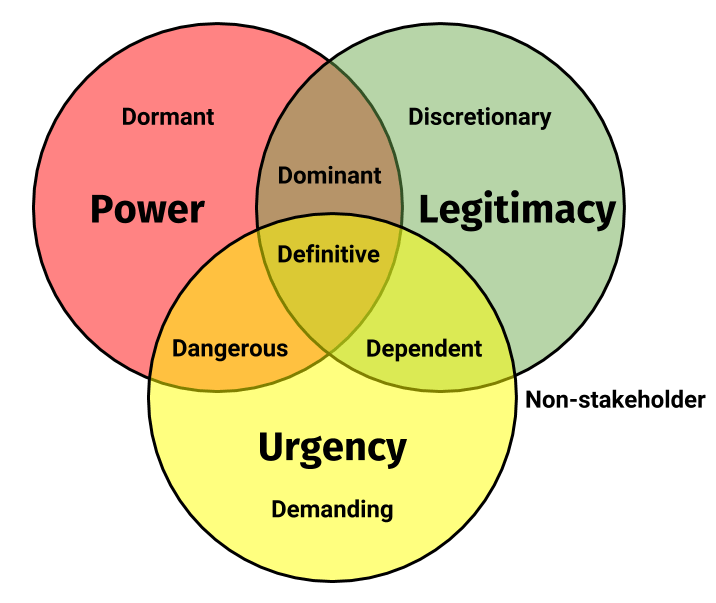Mapping stakeholders
It is the term used to describe the process of stakeholder analysis graphically, so that those involved can be understood from different points of view.
With the stakeholder mapping is to facilitate the reading of the various analyses to be carried out, for better understanding and comprehension.
During investigations it is common to develop ways of presenting the data they have collected. The organization of data allows classifying and reviewing the information collection for valuable information.
The representation of the content allows comparing contrast with the known data collected, or simply allows others to absorb or understand the data more easily. In the world of construction projects, the most effective presentation of the data is graphical or pictorial.
Contents |
Objectives
- Develop a useful list of the Stakeholders.
- Evaluate the main characteristics of each participant.
- Present information in a way that helps the project team to implement effective stakeholder management initiatives.
- Replace Subjectivity with objective measures.
- Make de measure process easy to understand.
- Facilitate the review of the stakeholder’s analysis.
- Simplify the updating of the analysis during the construction phase.
Mapping methods
Below are mentioned the stakeholder mapping techniques better known and commonly used
Salience Model
The Salience Model is used to help identify the needs of a stakeholder. Unlike other methods, this model uses three dimensions to classify the stakeholders: power, legitimacy and urgency, which are defined as:
- Power: is the ability of a social actor influence over another social actor to do something that would not have done otherwise, such a way that the results of a project or organization are affected. Some associate terms are:
- Legitimacy: Is the level of authority or having an actor involvement in socially constructed system of norms, values and beliefs system. E.g.: the authority of a stakeholder in a project.
- Urgency: The degree of attention stakeholders need, i.e. is the expected time to meet the expectations of the concerned.
- Salience: the degree to which managers or researchers prioritize the satisfaction of the needs of stakeholders.
This three-dimensional view of stakeholders, needs and expectations of a project may help researchers reduce key stakeholders.
Graphical representation
A Venn diagram represents it as you can see below.
Classification
Stakeholders are classified into 4 salience levels, High, Medium, Low and null. Likewise each combination between power, legitimacy and urgency, requires different attention.
Latent Stakeholders
It is only when you Dated an attribute (power, legitimacy or urgency) to the interested party. The relevance will be low as managers take only one of the attributes into account
- Dormant
Those who have power but no legitimacy and urgency in their requests
- Discretionary
It has legitimacy, but no power or urgency
- Demanding
Urgency but has no power or legitimacy
Expectant Stakeholders
The priority is medium as managers take two of the attributes into account. Is in between a passive and active level that requires certain attention to be satisfied.
- Dominant
Is the situation in which the parties are both powerful and legitimate time, but do not have the urgency. Should focus on your expectations, but provided there is no great urgency.
- Dependent
According to the model, these stakeholders have no actual power in the project. However, they need to be managed, as they can quite easily choose to side with other stakeholders and thereby influence the project.
- Dangerous
Named appropriately, these actors have the power and urgency, but without legitimacy, therefore they have demands on the project without actually being a part of it.
Such stakeholders should be kept satisfied by ensuring an adequate participation.
Definitive Stakeholders
They need to be providing of focused attention, as their requirements are related to the three attributes (power, legitimacy and urgency). Its priority level is high.
Non Stakeholders
Their priority level is null. These people are not interested in the project. Investing time and effort in this type of people do not help you get the results of the project in anyway.
